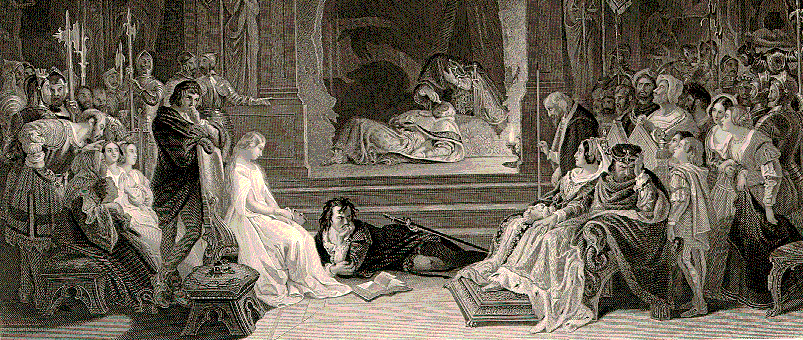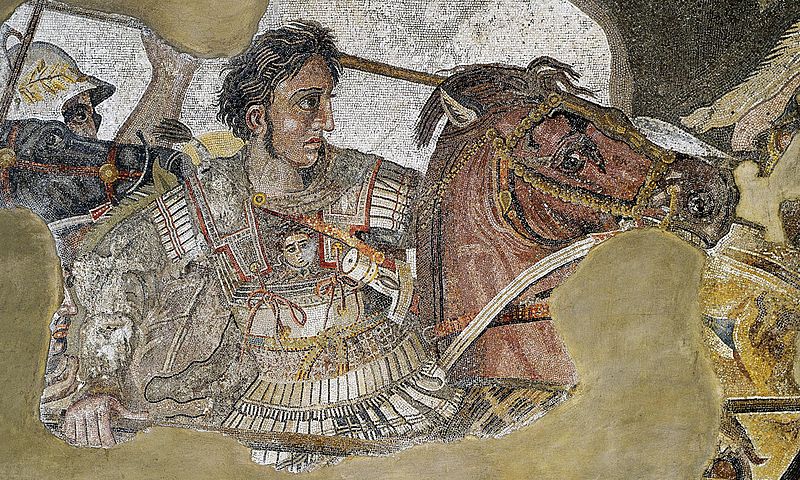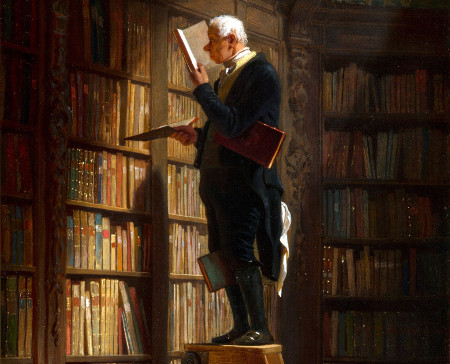(Sponsored by the Thai pet supply company SmartHeart in December 2017.)
Literature
Good Neighbors

I believe it then to be quite simply true that books have their own very personal feeling about their place on the shelves. They like to be close to suitable companions, and I remember once on coming into my library that I was persistently disturbed by my ‘Jane Eyre’. Going up to it, wondering what was the matter with it, restless because of it, I only after a morning’s uneasiness discovered that it had been placed next to my Jane Austens, and anyone who remembers how sharply Charlotte criticised Jane will understand why this would never do.
— Hugh Walpole, These Diversions: Reading, 1926
Seuss Taxidermy

In the 1930s, before he became a children’s author, Theodor Geisel worked as an illustrator for New York ad agencies. His father, who was superintendent of parks in Springfield, Mass., began sending him the antlers, beaks, and horns of deceased zoo animals, and Ted turned them into the Collection of Unorthodox Taxidermy.
“Hope”
Submitted by Edward Thomas Noonan for Life magazine’s 1915 short story contest:
‘Here’s a pathetic case of chronic melancholia,’ the doctor continued, as we walked among the inmates. ‘That white-haired woman has been here twenty-six years. She is entirely tractable with one obsession. Every Sunday she writes this letter:
Sunday.
Dear John:
I am sorry we quarreled when you were going away out West. It was all my fault. I hope you will forgive and write.
Your loving,
Esther.
‘Every Monday she asks for a letter, and, though receiving none, becomes radiant with hope and says: “It will come to-morrow.” The last of the week she is depressed. Sunday she again writes her letter. That has been her life for twenty-six years. Her youthful face is due to her mental inactivity. Aimlessly she does whatever is suggested. The years roll on and her emotions alternate between silent grief and fervid hope.
‘This is the male ward. That tall man has been here twenty years. His history sheet says from alcoholism. He went to Alaska, struck gold, and returned home to marry the girl he left behind. He found her insane and began drinking, lost his fortune and then his reason, and became a ward of the State, always talking about his girl and events that happened long ago.
‘He is the “John” to whom “Esther” writes her letter.
‘They meet every day.
‘They will never know each other.’
Abstract

Prince Hamlet thought uncle a traitor
For having it off with his Mater;
Revenge Dad or not —
That’s the gist of the plot —
And he did — nine soliloquies later.
— Stanley J. Sharpless
“Death”
There is a little garden full of white flowers before this house, before this little house, which is sunken in a green hillock to the lintel of its door. The white flowers are full of honey; yellow butterflies and bees suck at them. The unseen wind comes rushing like a presence and a power which the heart feels only. The white flowers press together before it in a soft tumult, and shake out fragrance like censers; but the bees and the butterflies cling to them blowing. The crickets chirp in the green roof of the house unceasingly, like clocks which have told off the past, and will tell off the future.
I pray you, friend, who dwells in this little house sunken in the green hillock, with the white flower-garden before the door?
A dead man.
Passes he ever out of his little dwelling and down the path between his white flower-bushes?
He never passes out.
There is no chimney in that grassy roof. How fares he when the white flowers are gone and the white storm drives?
He feels it not.
Had he happiness?
His heart broke for it.
Does his heart pain him in there?
He has forgot.
Comes ever anybody here to visit him?
His widow comes in her black veil, and weeps here, and sometimes his old mother, wavering out in the sun like a black shadow.
And he knows it not?
He knows it not.
He knows not of his little prison-house in the green hillock, of his white flower-garden, of the winter storm, of his broken heart, and his beloved who yet bear the pain of it, and send out their thoughts to watch with him in the wintry nights?
He knows it not.
Only the living know?
Only the living.
Then, then the tombs be not for the dead, but the living! I would, I would, I would that I were dead, that I might be free from the tomb, and sorrow, and death!
— Mary E. Wilkins, “Pastels in Prose,” Harper’s New Monthly Magazine, December 1892
History

“It is conceivable that Alexander the Great — for all the military successes of his youth, for all the excellence of the army he trained, for all the desire he felt in himself to change the world — might have stopped at the Hellespont, and never crossed it, and not out of fear, not out of indecisiveness, not out of weakness of will, but from heavy legs.” — Kafka
Solace
A thinly clad man, who was trudging afoot through a wintry and shelterless region, met another wrapped in a big black cloak. The cloak hung heavily on its wearer, and seemed to drag him back, but at least it kept off the cold.
‘That’s a fine warm cloak you’ve got,’ said the first man through his chattering teeth.
‘Oh,’ said the other, ‘it’s none of my choosing, I promise you. It’s only my old happiness dyed black and made over into a sorrow; but in this weather a man must wear what he’s got.’
‘To think of some people’s luck!’ muttered the first man, as the other passed on. ‘Now I never had enough happiness to make a sorrow out of.’
— Edith Wharton, The Valley of Childish Things, and Other Emblems, 1896
“On the Faults of Men”
Jupiter gave to every man a sack,
To hold his faults and carry on his back;
Another, Jupiter gave, which from his breast
Hung heavy with his neighbour’s faults oppressed:
On this account man never can behold
His own, but can his neighbour’s faults unfold.
— Phaedrus
Eyestrain

Does there, I wonder, exist a being who has read all, or approximately all, that the person of average culture is supposed to have read, and that not to have read is a social sin? If such a being does exist, surely he is an old, a very old man, who has read steadily that which he ought to have read sixteen hours a day, from early infancy. … My leisure has been moderate, my desire strong and steady, my taste in selection certainly above average, and yet in ten years I seem scarcely to have made an impression upon the intolerable multitude in volumes which ‘everyone is supposed to have read.’
— Arnold Bennett, Journal, Oct. 15, 1896
